| Tools and Weapons |
| Tools and Weapons |
![]() Neandertals made elaborate stone tools, which were a crucial part of their
survival. They served as instruments for hunting, stripping flesh from
animals, processing materials, and creating fire. The tool technology more
commonly associated with the Neandertals is called Mousterian and lasts
from 300,000 years ago until around 27,000 years ago.
Neandertals made elaborate stone tools, which were a crucial part of their
survival. They served as instruments for hunting, stripping flesh from
animals, processing materials, and creating fire. The tool technology more
commonly associated with the Neandertals is called Mousterian and lasts
from 300,000 years ago until around 27,000 years ago.
![]() Mousterian tool kits consisted of items such as hand axes, choppers, scrapers,
backed knives, denticulates, and points. Hand axes, like the image seen
at the indentation of every paragraph, were probably widely used in skinning
and cutting up game. Choppers were used for smashing bones open to obtain
marrow, hacking wood, softening meat, and possibly as a primitive hammer.
Scrapers dressed hides and possibly assisted in obtaining meat from bones.
Backed knives were made for the ability to easily cut flesh. Deniculates
might have been used to carve and shape wood. This would include creating
sharp points on Mousterian spears for hunting. Points, on the other hand,
were hafted on to the spears. This instrument, used for attack, defense,
and hunting, was more than likely thrusted instead of thrown.
Mousterian tool kits consisted of items such as hand axes, choppers, scrapers,
backed knives, denticulates, and points. Hand axes, like the image seen
at the indentation of every paragraph, were probably widely used in skinning
and cutting up game. Choppers were used for smashing bones open to obtain
marrow, hacking wood, softening meat, and possibly as a primitive hammer.
Scrapers dressed hides and possibly assisted in obtaining meat from bones.
Backed knives were made for the ability to easily cut flesh. Deniculates
might have been used to carve and shape wood. This would include creating
sharp points on Mousterian spears for hunting. Points, on the other hand,
were hafted on to the spears. This instrument, used for attack, defense,
and hunting, was more than likely thrusted instead of thrown.
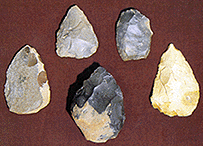 |
|
From the left to right there is a scraper, and two small hand axes. On the top from right to left is another scraper and a flaked point. |
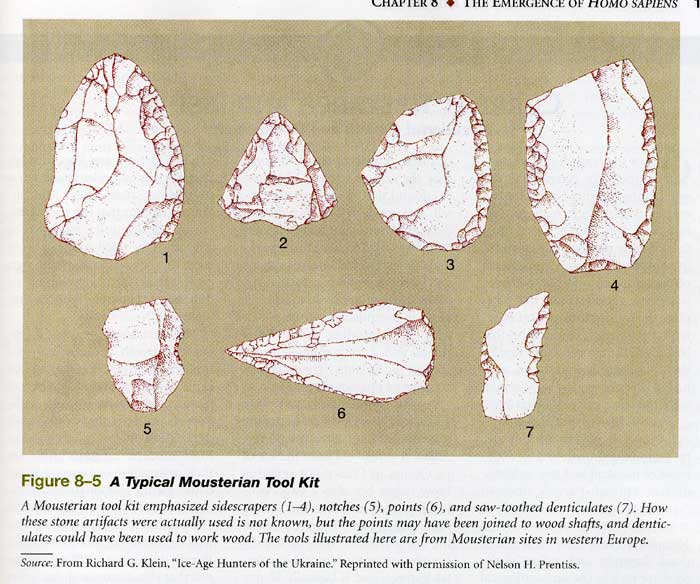 |
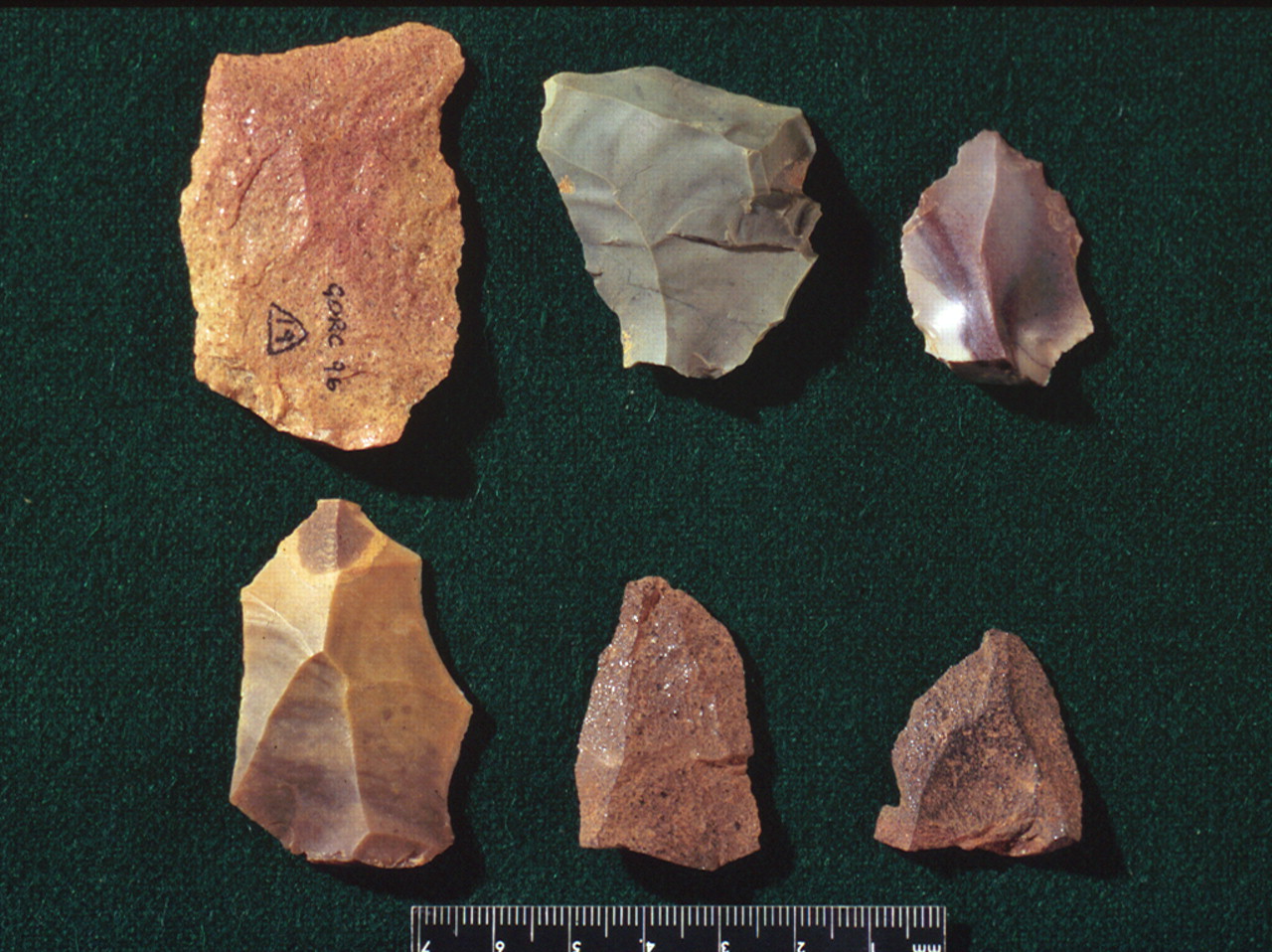 |
 |

http://anthro.palomar.edu/homo2/mod_homo_3.htm |
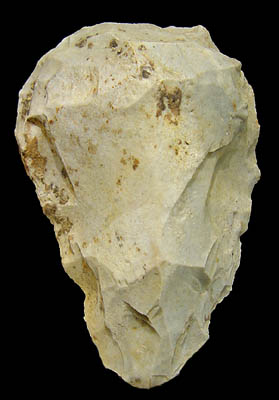 |
 |
 |
 |
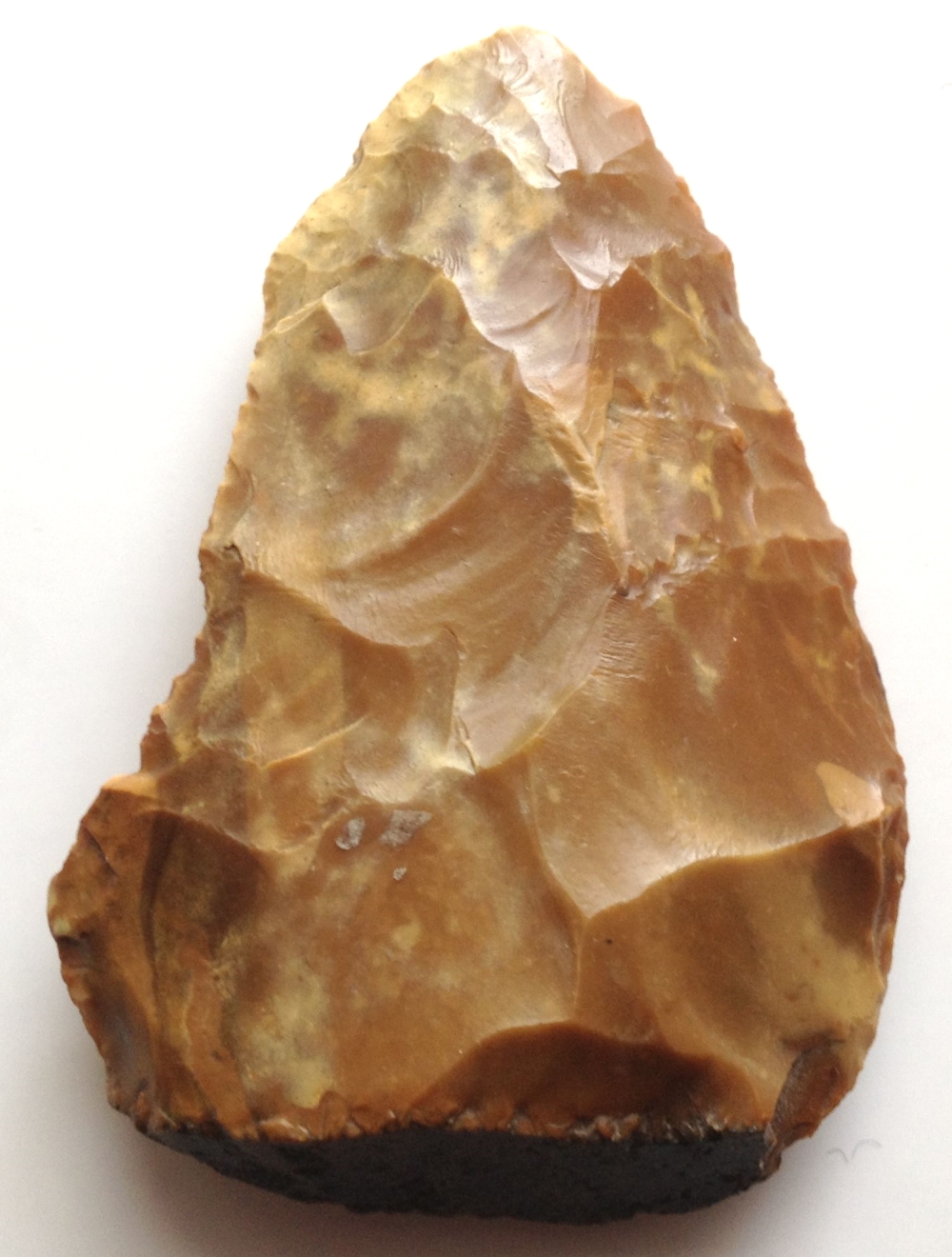 |
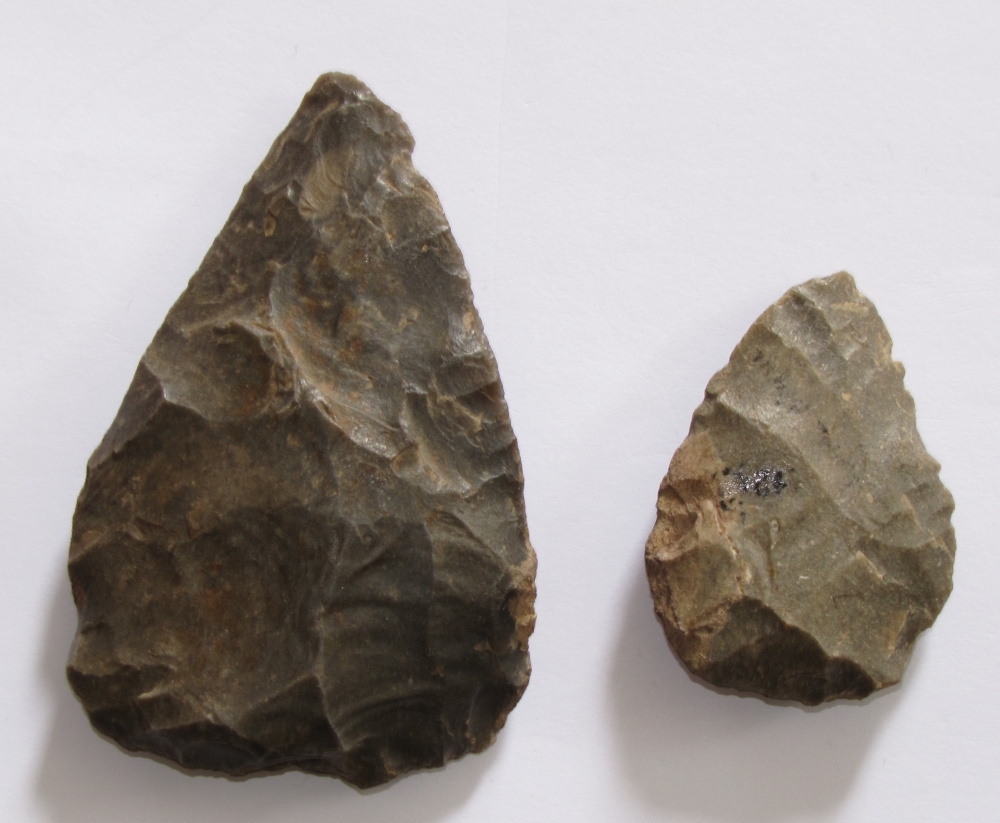 |
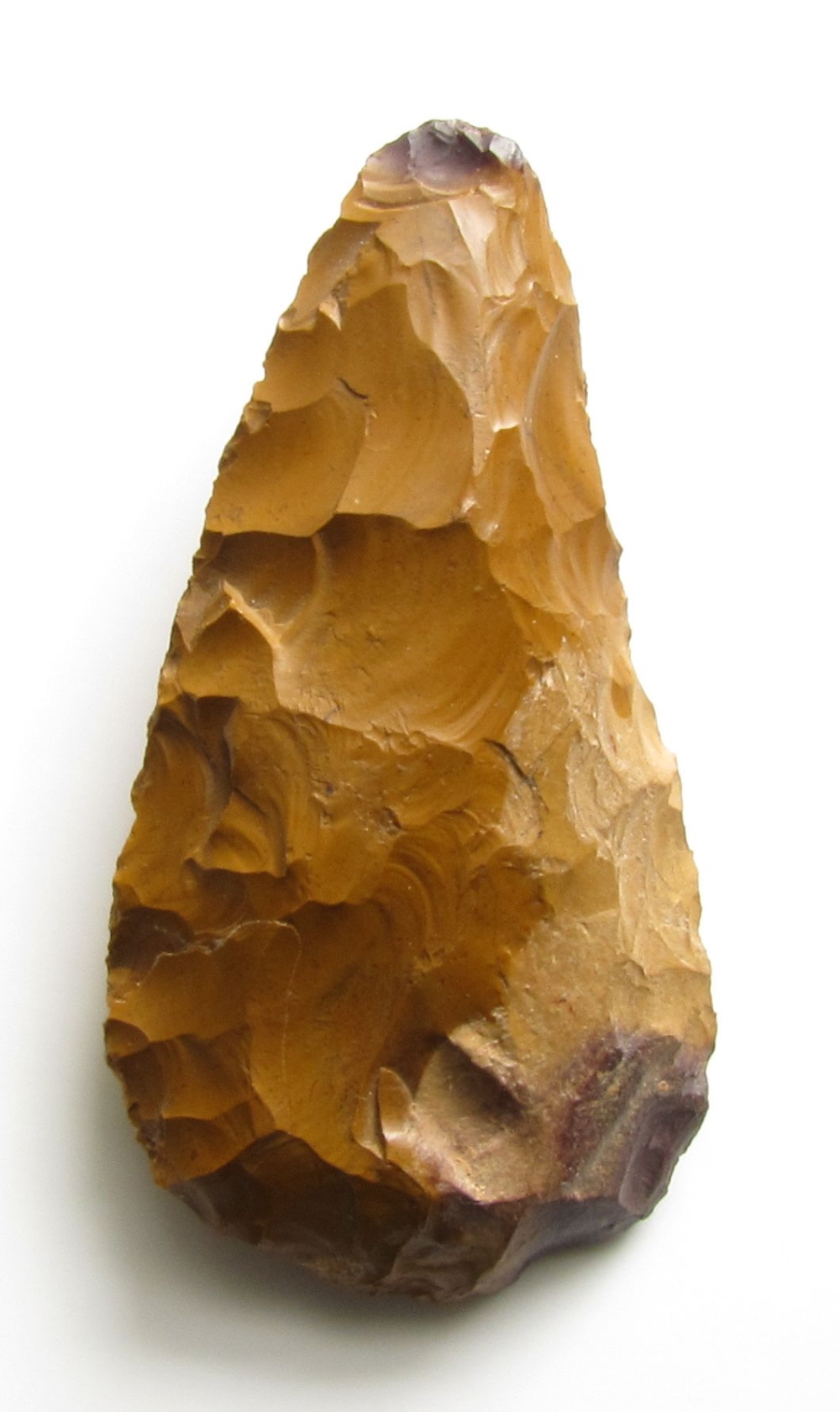 |
 |
![]() These implements were created with the Levallois Technique, in which a
carefully prepared stone core was made by removing chips from the top and
sides. Whole flakes were then struck from the core to be refinished into
a variety of specialized tools. In striking these flakes from cores, Neandertals
had to have a certain cognitive ability and mental picture of what form
they wanted to shape the flake in. They had to know at which angle to make
a fine impact, and how hard to hit it, in order to produce the tool they
needed. Therefore, Neandertals had the intellect to comprehend the concept
of symmetry. Without this, they would not have been able to produce such
effective tools. Neandertals also made innovations in their tool technology
by being one of the earliest hominins to haft stone and flint points on
the edges of wooden spears, creating effective hunting weapons. Other inventive
ideas included setting the tip of a wooden spear on fire to make a sharp
point, which was also used for hunting.
These implements were created with the Levallois Technique, in which a
carefully prepared stone core was made by removing chips from the top and
sides. Whole flakes were then struck from the core to be refinished into
a variety of specialized tools. In striking these flakes from cores, Neandertals
had to have a certain cognitive ability and mental picture of what form
they wanted to shape the flake in. They had to know at which angle to make
a fine impact, and how hard to hit it, in order to produce the tool they
needed. Therefore, Neandertals had the intellect to comprehend the concept
of symmetry. Without this, they would not have been able to produce such
effective tools. Neandertals also made innovations in their tool technology
by being one of the earliest hominins to haft stone and flint points on
the edges of wooden spears, creating effective hunting weapons. Other inventive
ideas included setting the tip of a wooden spear on fire to make a sharp
point, which was also used for hunting.
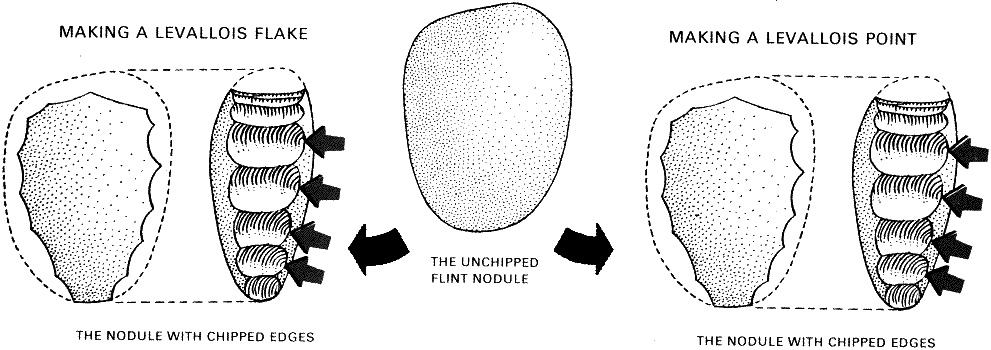
From Early Man by F. Clark Howell, 1965 |
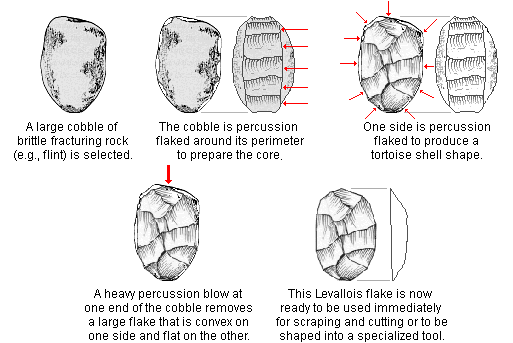
http://anthro.palomar.edu/homo2/images/Levallois_technique.gif |
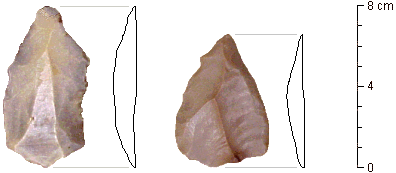
http://anthro.palomar.edu/homo2/mod_homo_3.htm |
 |
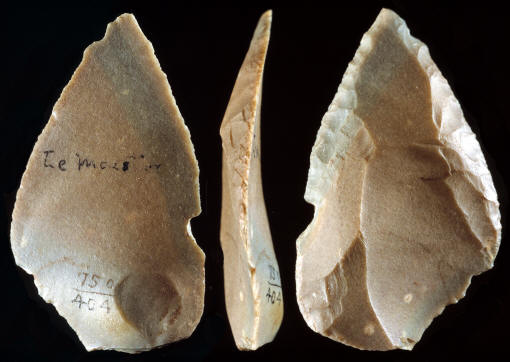 |
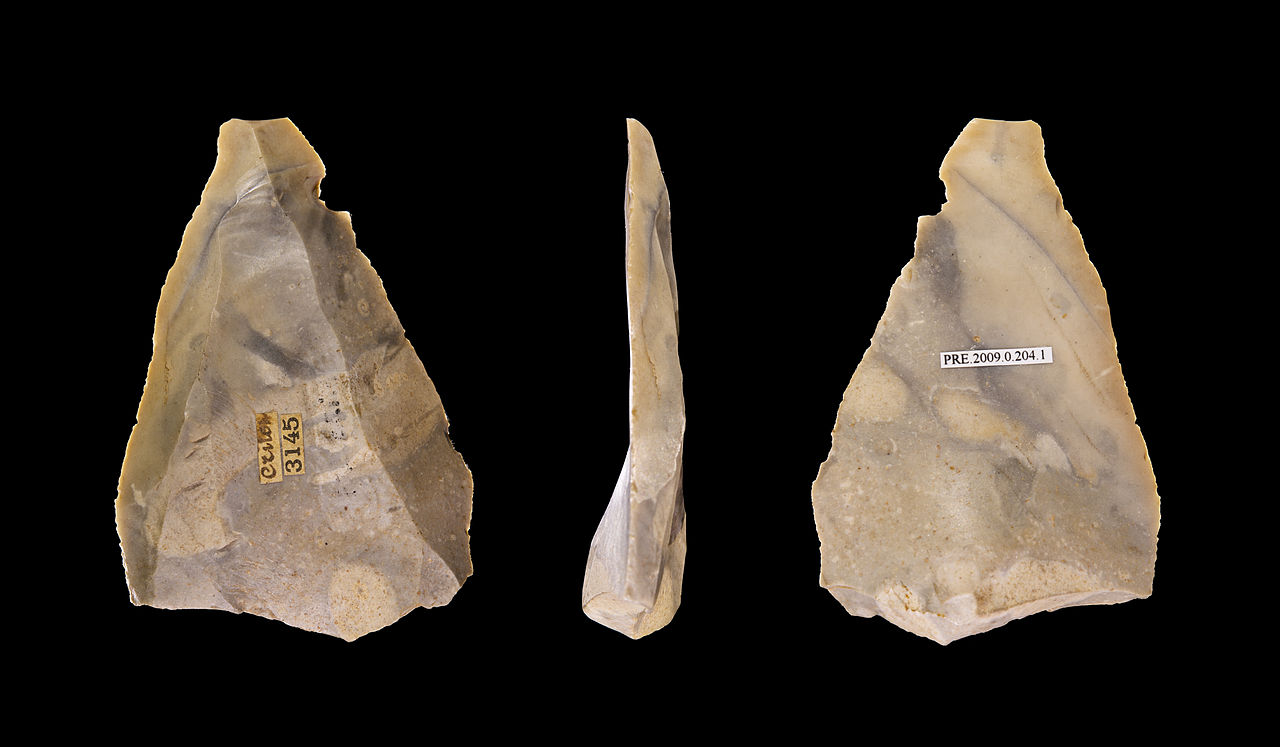 |
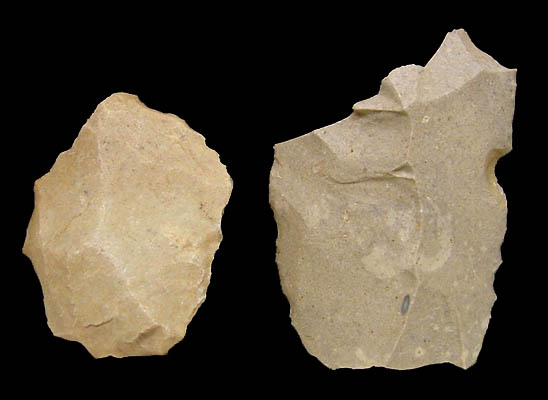 |
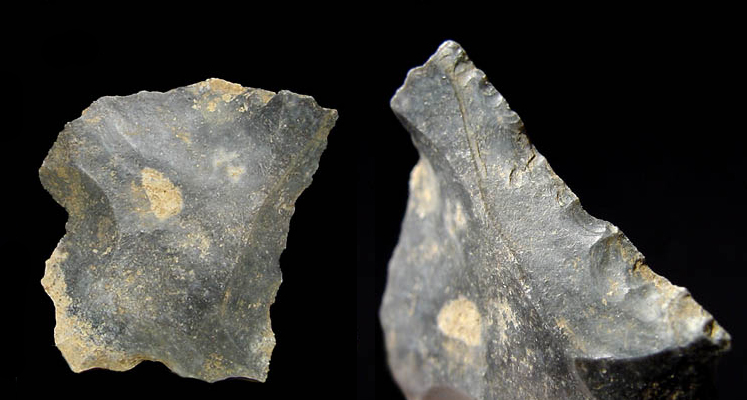 |
 |
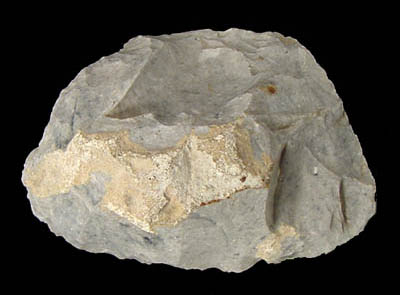 |
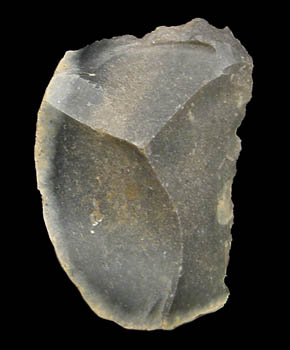 |
|
|
|
|
|
|
 |
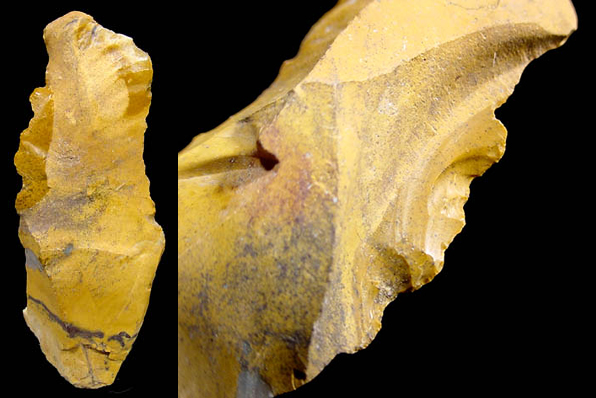 |
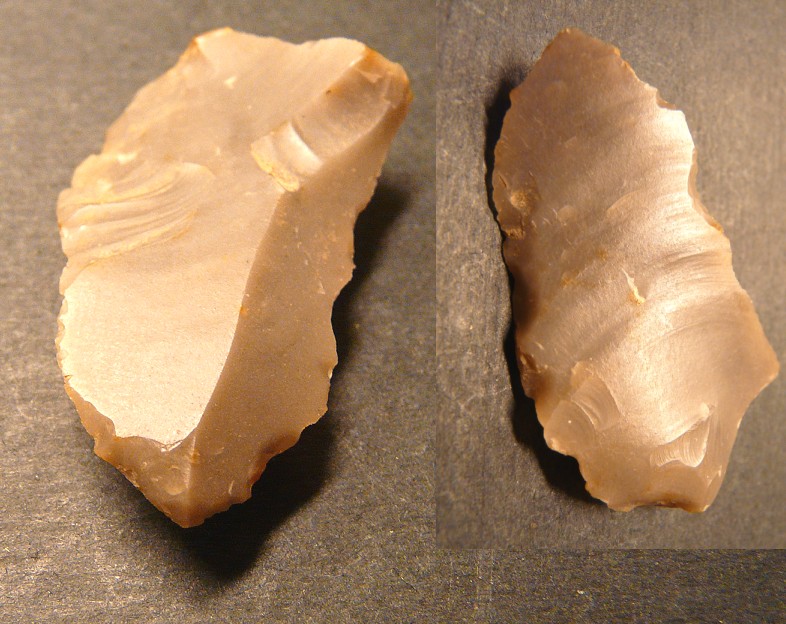 |
|
|
|
|
|
![]() Another tool technology that has recently been credited to Neandertals
is the Chatelperronian technique. This technology started from about 32,000
years ago and ended at around 30,000 years ago. The Chatelperronian does
have some Mousterian features, but for the most part, many of the tools
are made on well struck blades. The main characteristic of this technology
is that the typical Chatelperronian knife has a curved back, this is similar
to the Mousterian backed knife.
Another tool technology that has recently been credited to Neandertals
is the Chatelperronian technique. This technology started from about 32,000
years ago and ended at around 30,000 years ago. The Chatelperronian does
have some Mousterian features, but for the most part, many of the tools
are made on well struck blades. The main characteristic of this technology
is that the typical Chatelperronian knife has a curved back, this is similar
to the Mousterian backed knife.
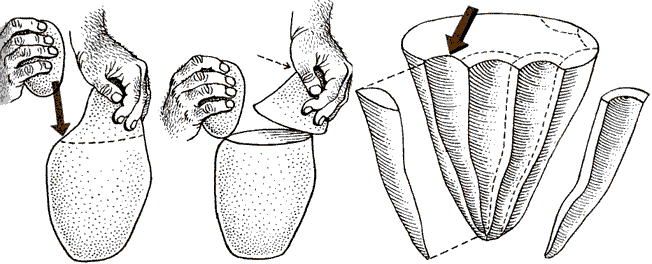 |
|
|
|
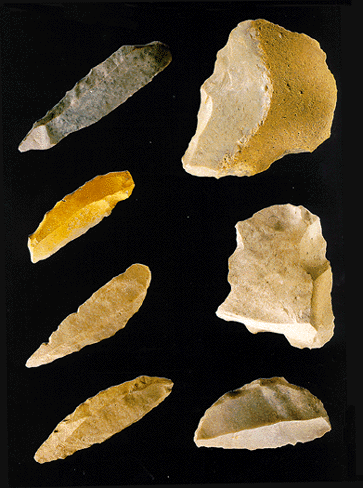 |
|
The shape of the blades is similar to the Mousterian blade. |
![]() There had been some controversy over whether or not Neandertals were 'capable'
of creating such an advanced technology. However, with the discovery of
the Saint-Cesaire Neandertal, more commonly known as the "last Neandertal,"
this was changed. It is now believed that these hominids were responsible
for the Chatelperronian tool technology. Yet it is still believed by some
paleanthropologists that Neandertals were just imitating the technologies
of their neighbors, Homo Sapiens.
There had been some controversy over whether or not Neandertals were 'capable'
of creating such an advanced technology. However, with the discovery of
the Saint-Cesaire Neandertal, more commonly known as the "last Neandertal,"
this was changed. It is now believed that these hominids were responsible
for the Chatelperronian tool technology. Yet it is still believed by some
paleanthropologists that Neandertals were just imitating the technologies
of their neighbors, Homo Sapiens.
![]() A final tool implement that Neadertals used were their front teeth. It
has been speculated by paleoanthropologists and physical anthropologists
that these ancestors used
A final tool implement that Neadertals used were their front teeth. It
has been speculated by paleoanthropologists and physical anthropologists
that these ancestors used 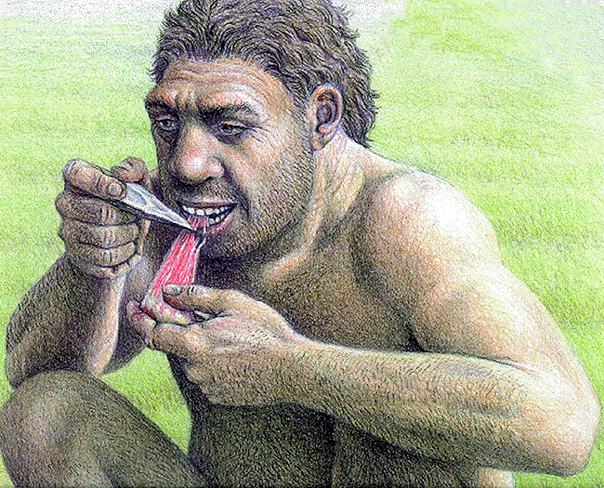 their
jaws and teeth as a gripping vice to make tools and hold objects other
than food items in their mouths, using their front teeth as anchors. In
many skulls, such as Shanidar I, the front teeth are literally worn down
to the root. Extensive studies done on the wear patterns of Neandertal
teeth reveal that both animal and vegetable material had been pulled out
across their clinched teeth. Other microscopic dental studies reveal that
items were being held in the mouth and simultaneously cut with stone tools
(Stringer 1993). Not only did Neandertals cut materials while holding them
in their mouths, but they also used their teeth as an anchor to procure
hides with side scrapers. This excessive wear on Neandertal teeth has lead
to speculation that hides were processed, while being clenched in their
mouth's, by rubbing a scraper back and forth, and up and down. It it obvious
from this evidence, that although the invention of the needle did not appear
until later, Neandertals probably managed to crudely tie processed hides
together with sinews.
their
jaws and teeth as a gripping vice to make tools and hold objects other
than food items in their mouths, using their front teeth as anchors. In
many skulls, such as Shanidar I, the front teeth are literally worn down
to the root. Extensive studies done on the wear patterns of Neandertal
teeth reveal that both animal and vegetable material had been pulled out
across their clinched teeth. Other microscopic dental studies reveal that
items were being held in the mouth and simultaneously cut with stone tools
(Stringer 1993). Not only did Neandertals cut materials while holding them
in their mouths, but they also used their teeth as an anchor to procure
hides with side scrapers. This excessive wear on Neandertal teeth has lead
to speculation that hides were processed, while being clenched in their
mouth's, by rubbing a scraper back and forth, and up and down. It it obvious
from this evidence, that although the invention of the needle did not appear
until later, Neandertals probably managed to crudely tie processed hides
together with sinews.
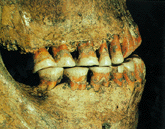 |
|
Shanidar I's excessive tooth wear. Notice how the tooth is worn down to the root. |
![]()